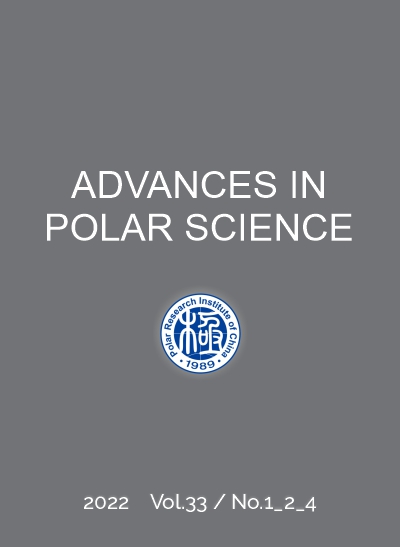Publication: Advances in Polar Science (APS). Vol. 33, No. 2, 135~144, June 2022
To download the publication please click on the download link at the bottom of the page
Author: HAN Yuxin, SHI Jiuxin, HOU Saisai and XIAO Changhao
DOI: 10.13679/j.advps.2022.0002
CNARC member: Polar Research Institute of China (PRIC)
Abstract: The Regional Ocean Modeling System (ROMS) is employed to create a three-dimensional numerical model of the summer circulation in the Prydz Bay region, Antarctica. Consistent with the currents measured using an underway acoustic Doppler current profiler during a Chinese cruise, the simulated current field illustrates the major features of the Prydz Bay circulation, including the Antarctic Slope Current (ASC) along the continental shelf break, the cyclonic Prydz Bay Gyre, and the Prydz Bay Eastern Coastal Current (PBECC). The effects of grounding icebergs D15 and B15 on the circulation in Prydz Bay are investigated via numerical simulations. The results indicate that these giant grounding icebergs substantially affect the flows into and within the bay, which may differ with the different grounding locations. As grounding iceberg D15 is located close to the southwestern part of the West Ice Shelf (WIS), it cuts off the coastal current along the outer edge of the WIS, and the ASC can only enter Prydz Bay from the west side of iceberg D15, whereupon it becomes a main source of the PBECC. Iceberg D15 also weakens the circulation in the bay in general. The relatively small iceberg B15 entered Prydz Bay from 2007 to 2009 and grounded on the southwestern section of the Four Ladies Bank. The numerical experiments indicate that iceberg B15 guides the ASC flowing into the bay around its west side and reduces the width of the inflow on the eastern side of the Prydz Bay Channel. The grounding of iceberg B15 has also led to adjustments of the circulation within the bay, among which the most significant is that the outflow along the western flank of Fram Bank has shifted to the west and become more intensive.
Key words: circulation, grounding iceberg, numerical simulation, Prydz Bay, Antarctica


